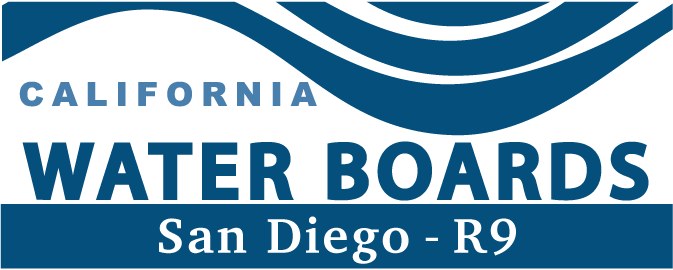San Diego Region - Total Maximum Daily Loads (TMDLs)
Introduction
A Total Maximum Daily Load (TMDL) is a calculation of the loading capacity of a specific pollutant that can be assimilated by a water body without impairing its designated beneficial uses. A TMDL can then be used as a planning tool for restoring water quality conditions of a water body by estimating uncontrollable load allocations and assigning waste load allocations to controllable sources in order to achieve the calculated assimilative capacity. This planning and restoration process may be referred to as a TMDL investigation.
There are streams, lakes and coastal waters within this Region that do not meet certain water quality standards, and are identified as impaired waters. The Clean Water Act (CWA) Section 303(d) addresses these waters by requiring states to identify the waters and develop TMDLs for them. TMDLs may be adopted as Basin Plan amendments or used as the basis to implement Advance Restoration Plans (ARPs) prior to adoption of a TMDL as a Basin Plan amendment. ARPs may include the use of existing permits such as National Pollutant Discharge Elimination System (NPDES) permits, Waste Discharge Requirements (WDR) or other regulatory tools such as enforcement actions.
The San Diego Water Board's TMDL Program works to develop plans to restore and protect waters in the San Diego Region. The TMDL approach does not replace existing water pollution control programs. It provides a framework for evaluating pollution control efforts and for coordination between federal, state and local efforts restoring waters to meet water quality standards. More information is available in the TMDL Program Fact Sheet.
Websites
For more information on TMDLs:
The State Water Resources Control Board (State Board) coordinates the TMDL Program statewide. The State Board's webpage contains addition information regarding the TMDL Program, development of TMDLs, and adopted TMDLs in California.
The U.S. Environmental Protection Agency (USEPA) has a webpage on the Impaired Waters and TMDL Program under section 303(d) of the Clean Water Act. Information on this page includes: status of 303(d) lists, TMDL program documents, TMDL Federal Advisory Committee, TMDL lawsuit information, and other links.
Region 9 of the USEPA covers Arizona, California, Hawaii, Nevada, the Pacific Islands subject to U.S. law, and approximately 140 Tribal Nations. USEPA Region 9's webpage on TMDLs also includes the monitoring, assessment and status of California's 303(d) list and finalized TMDLs.



